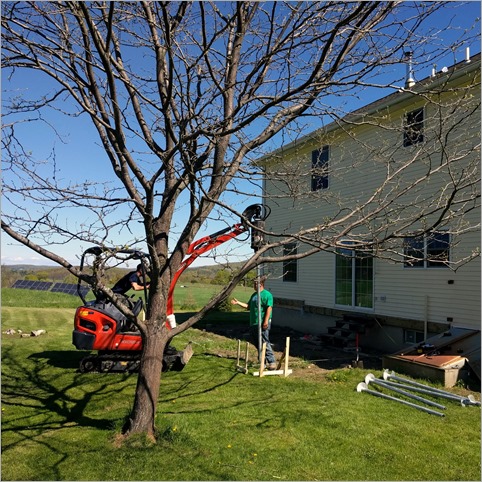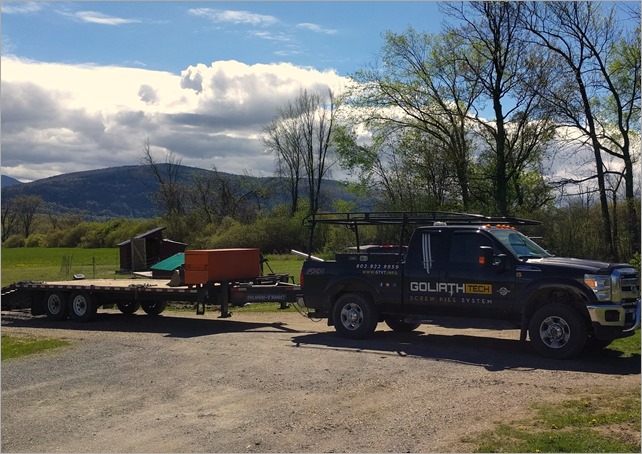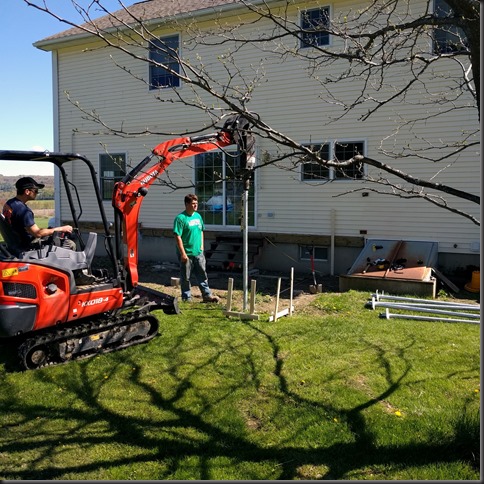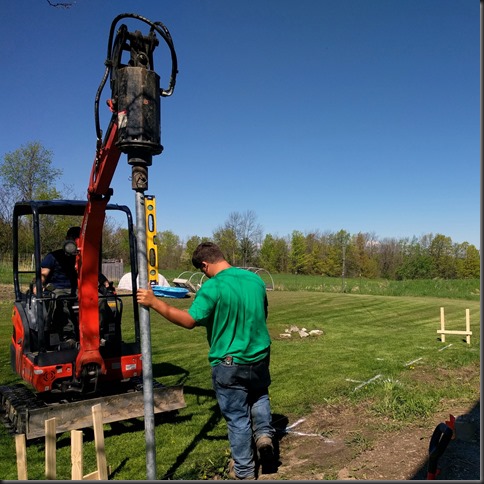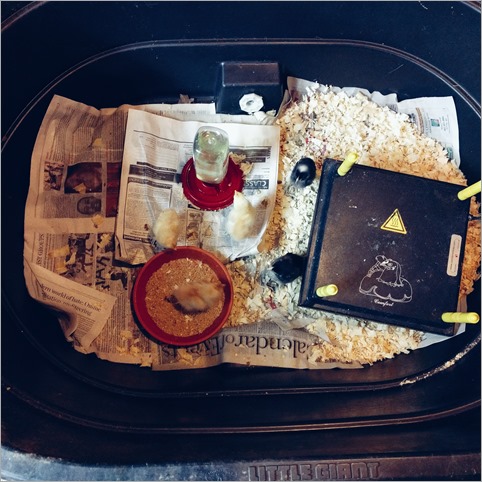As I’ve mentioned, our big non-gardening project this year is rebuilding our back deck. Today we got the construction process started with the installation of our footings.
My contractor Rich had mentioned the idea of helical screw piles to me as an alternative to the typical concrete tube footings. Did a little research and it did seem like a good fit and we have a local franchise for GoliathTech in Bristol. Basically they are a giant screw that are turned into the ground with a special attachment on an excavator. They have a torque measurement that helps them see if they are getting enough holding power in the spot and they go plenty deep enough to take care of getting below the frost line. Once in, they are almost impossible to pull out without using the same equipment and even the small ones that I got are rated at about 5000 lbs. load bearing each. SunCommon, the company that installed our solar, is now using screw piles for all of their panel installations.
After getting some additional information and rough quotes, it seemed like a good fit and so today we had them come out and install the five footings we need for our deck design.
I have to say I’ve been very pleased with the process and there are a bunch of advantages to me over the traditional concrete footing method
- No excavation needed
- No heavy equipment tearing up your yard (the Kubota they use is on treads and is small enough to fit through a 38” wide space)
- No trying to get a concrete mixer out and all the associated time involved with concrete. I guess you could also get pre-filled tubes, but then your excavation has to be even more spot on and you are digging 4 foot plus holes.
- It’s fast, only took about an hour and a half and we could build on it today if we wanted.
- It’s actually cheaper, at least for what I needed for my project.
- The hardware gives you about 6” of adjustability up and down.
- Less movement in the ground
- Longer lasting and more durable.
If you are thinking of building a deck or dock or something like that, it’s probably worth considering these. I may look at them for a small animal shed we want to build next year for goats and sheep.
Couple more shots showing how they screw these in, how long the screws are and how they check the level the whole time.

